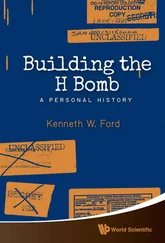He also had an extensive library, with quite a few first editions, some signed by the authors. They included books by G.K. Chesterton, James Stephens and Henry Williamson amongst others. Then he had many slim, limited edition books of poetry, printed on English hand-made paper with a single poem and illustration in each. Mostly they too were signed. I suppose they must be worth something now, but I wouldn’t part with them.
Finally, he was also a great walker. When I was a teenager, I used to go on long walks with him of up to twenty miles in the Surrey countryside. We would discuss all sorts of topics.
Let’s talk about Operation Gandhi now, the first non-violent direct action group with which you were associated. Am I right in saying that the group emerged out of the PPU’s decision in 1949 to set up a commission with the brief of looking into the relevance of Gandhi’s ideas to Britain?
That’s right. The Commission met for a couple of years. Then a number of people, including Hugh Brock and Kathleen Rawlins, both Quakers, decided it was time to put some of the ideas into action. Hugh was then deputy editor of Peace News , becoming its editor in 1955.
Gandhi’s ideas being what?
Well, it’s not easy to describe them succinctly. At least it wasn’t then! But, in essence, Gandhi argued that war and violence were not inevitable; that there was an alternative method of struggle, of non-cooperation and non-violent direct action, which he called satyagraha, or truth force.
How much did you know about Gandhi at that point?
I certainly hadn’t any in-depth knowledge. But then, I suppose, neither did some of the others in Operation Gandhi. What I did have, however, was the enthusiasm of a convert, so I read as much about him as I could and talked to those who knew more about him than I did. I’ve already mentioned Richard Gregg’s book The Power of Non-Violence . Well, I read a lot about Gandhi in that and also in a book by Bart de Ligt called The Conquest of Violence , which has a short preface by Huxley. In fact, if you were to ask me which books influenced the members of Operation Gandhi the most, then I’d have to say that it was probably those two. Those two and another book, Krishnalal Shridharani’s War without Violence , were usually in the background to our discussions.
Incidentally, while we’re on the subject of Gandhi, I remember one day at school being in the refectory with a boy who we nicknamed Gandhi because of his light brown skin, and the priest who was in charge saying, ‘Oh, Gandhi’s just been killed.’ Not surprisingly, we were both a bit shocked because he was such a well-known figure, even though we knew little about him.
There’s a phrase which Gregg uses in his book when discussing non-violent direct action: moral jiu-jitsu. Can you say something about that?
The idea in jiu-jitsu is that you use the force that your opponent is directing against you to throw them off balance by not reacting as they expect. In other words, he was saying that if someone attacks you, they’ll expect a certain sort of violent response, and if you don’t give them that then it will psychologically and morally throw them.
After all, most people when they attack someone expect physical resistance. But the satyagrahi, to use Gandhi’s terminology, doesn’t respond with that. He or she accepts the blows. Not because they can’t fight back. But because they choose not to. That’s a different sort of resistance altogether.
Near the front of his book, Gregg quotes a newspaper account of an incident during Gandhi’s campaign against the salt tax. The police beat up hundreds of unresisting demonstrators. But, finally, it was the police who backed down. Can you think of any times from your own experience when the technique of moral jui-jitsu worked for you like that?
I don’t think that I was ever quite in that situation. But certainly, the way that we responded to the use of force at demonstrations was very much part and parcel of that general philosophy. Probably, many policemen in those days would have expected someone they were arresting in the context of a political demonstration to offer some form of physical resistance; whereas the essence of our approach was not to do that, so we offered them resistance of a different kind. We didn’t threaten or abuse them, and that made some kind of rapport possible.
I get the sense that Gregg’s is a very practical book?
Oh yes. We took it and other literature on non-violence as a guide to how we should react and to how we should campaign. We went to it for inspiration and for examples. The very interesting thing to me now is that Gregg was looking at the whole psychology of non-violent resistance. But then Gene Sharp came along and changed the terminology from moral to political jui-jitsu, so it wasn’t just the individual reaction; it was how it would affect the politics if you didn’t comply, but you didn’t violently resist. And that was a very interesting shift.
Tell me more about that.
Okay, I’ll give you an example. In India, it wasn’t that the opponent was necessarily converted, though of course some people may have been. The real difficulty for the colonial power was enforcing laws when there was mass non-compliance. You had a large population who were simply defying the laws, that is the ones they considered unjust or unreasonable. And what did the authorities do about it? They couldn’t put millions of people in jail [laughs]. If a small number of people had used force, okay they could have dealt with that. But in India the resistance was widespread. I think that Richard Gregg, although he uses the term moral jui-jitsu, was also pointing to the political difficulties of dealing with that kind of resistance.
I was so taken with the idea of non-violent resistance and the power of it, that I even began to think of it as something that you could use on almost every occasion. Once, following a meeting in Redhill, I took a shortcut home, and saw this big man, swaying from side to side, coming directly towards me. Then he came right up to me and grabbed my wrist. And I thought to myself, what the hell am I going to do about this? I could have resisted violently or at least struggled to free myself from his grasp as, I suppose, most people in that situation would have done. But, instead, I didn’t make any attempt to escape his grasp, but simply stood there and spoke to him very calmly and very rationally, telling him where I had been and where I was going. And as I did so, I felt his grip loosening. Then he let go of me. It turned out that he owned a house nearby which had just been burgled and that he thought that I was the burglar! I remember afterwards thinking to myself: this is non-violent resistance work. But, of course, it had taken place in a particular context.
What about the other book you mentioned: Bart de Ligt’s The Conquest of Violence ?
Like Gregg’s book, that was also from the 1930s. He too was very much in the Gandhian tradition but at the same time he also looked towards other methods of struggle, notably those employed by the anarcho-syndicalists. He gave examples not only of Gandhi’s methods, but also of those of many others, including Abdul Ghaffar Khan. He may even have mentioned Shelley and William Morris; I’m not sure. He certainly has a few pages on Ruskin and Tolstoy. But, all that said, I didn't see the books as having a very different approach, but as sort of backing one another up. De Ligt does make some criticisms of Gandhi. Of course, he was writing at a time when India hadn’t yet got its independence. But de Ligt was long dead by then; he died in September1939.
There’s a line in the book which I find particularly compelling. In fact, you’ve already quoted part of it: ‘The more there is of real revolution, the less there is of violence: the more of violence, the less of revolution.’
Читать дальше












